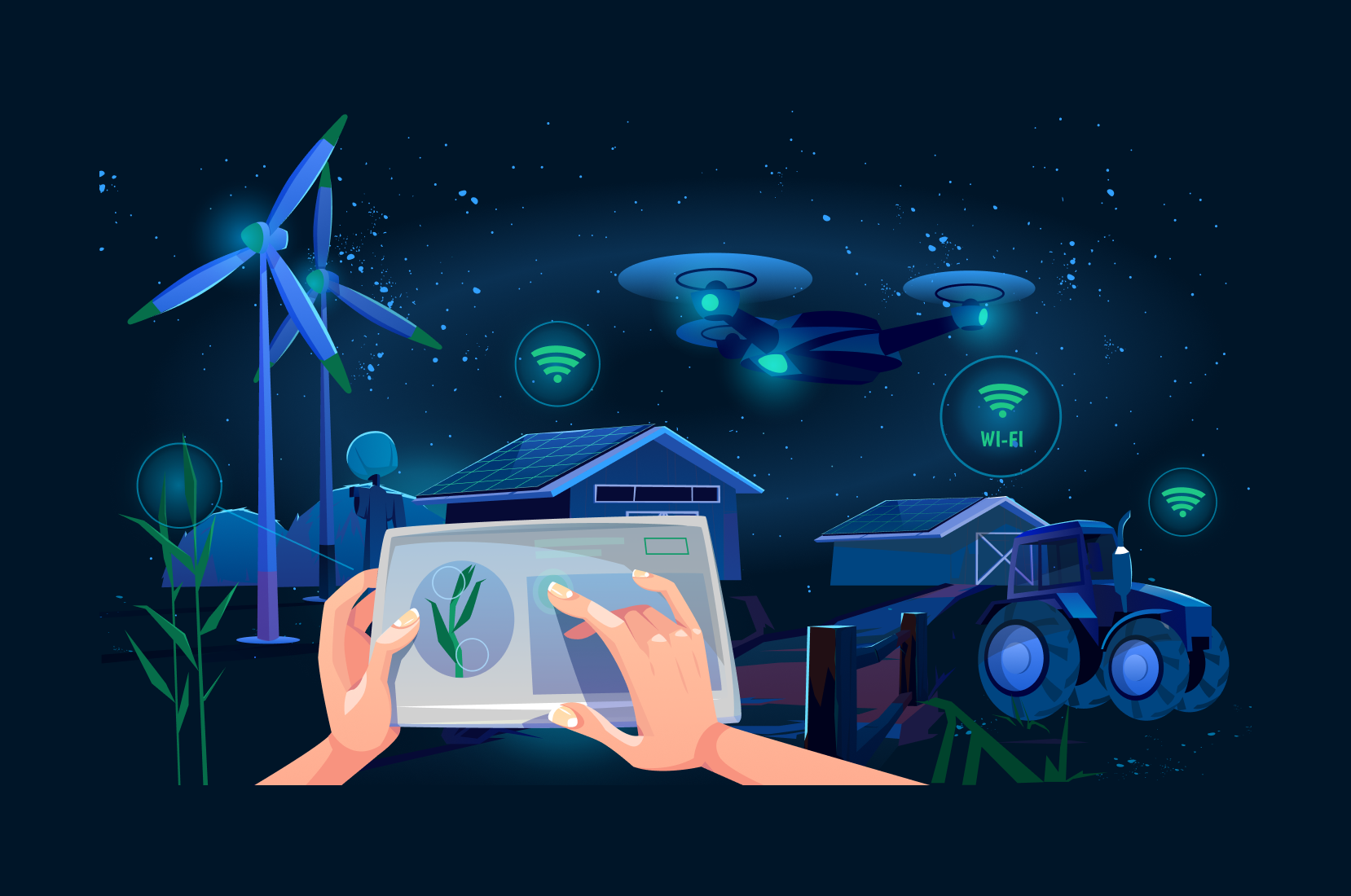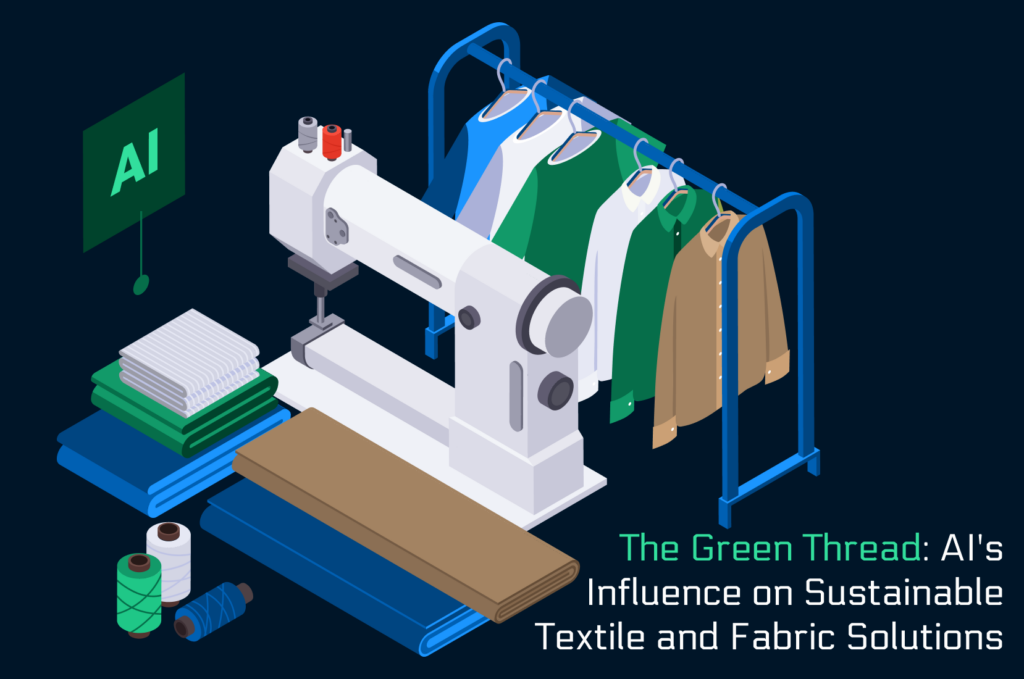Mechanization transformed agricultural activities from physically difficult, which requires titanic human endurance and the use of animals as additional strength into jobs that took just a few hours. The wave of digitization and new technologies is changing everything again and allows many processes to be automated while achieving maximum accuracy and productivity. However, farmers and global agribusinesses often miss out on the opportunities that artificial intelligence in agriculture can offer. Nevertheless, introducing AI and ML solves many challenges and helps to diminish many disadvantages of traditional farming. As in other industries, organizations in agriculture need to drive innovations and unlock new efficiencies to help them achieve their goals against modern challenges.
The challenges for agriculture are becoming increasingly acute every year. And the industry must evolve to be able to fulfill them and proudly stand before humanity. The main challenge is of course a growing worldwide population: the number of humans is expected to reach 9.8 billion by 2050, leading to dramatic increases in food demand. Next on the list is a reduction in arable land and shrinking workforce. The number of people working in agriculture is falling, from 40% of global workers in 2000 to just 27% of global workers in 2019. The situation is getting worse because of many obstacles – climate change, environmental issues, diminishing soil fertility, and many others. So, the modern agricultural landscape should evolve, branching out in various innovative directions to provide the necessary level of production and to be the support for humanity that this industry has always been.
In this article, we look at computer vision technology and what improvements it can offer for agriculture.
Benefits of AI Implementation in Agriculture Industry
Computer vision as a field of artificial intelligence can derive meaningful information from digital images, videos and other visual inputs — and take actions or make recommendations based on that information. Computer vision is used in industries ranging from energy and utilities to manufacturing and automotive – and the market is continuing to grow. Let’s see what it can offer to the agricultural sector.
Crop field security
Security is an important part farmers need to take care of. Farms are common targets for burglars, wild animals, or owned livestock damaging crops or equipment.
As it’s hard to monitor fields around the clock, technologies offer their solution to this situation. Сomputer vision in synergy with video surveillance systems can quickly identify security breaches and send an appropriate signal to the responsible person. ML-based the system detects objects and reacts to inconsistencies and atypicality behavior, involving a person to check the condition and safety of the field only if necessary. Some systems are even advanced enough to distinguish employees from unauthorized visitors. And it simplifies work even more.
Intelligent irrigation
Water is the primary source of irrigation for crops. The issue is obvious – farmers want to improve crop yields, herewith reduce water waste. In practice, they have a variety of ways to do this:
- precision irrigation, using sensors and technology to deliver water only where and when it is needed;
- conservation tillage, which helps to reduce evaporation and retain moisture in the soil,
- crop selection, rotation, and soil conservation.
Over the years, precision irrigation technology is spreading more and more. Using computer vision in combination with IoT farmers can manage irrigation in a way that maximizes crop capacity and profit while minimizing water consumption. Thanks to sensors in controlled environments, they can collect data on plant growth and create own irrigation strategy that plants of the corresponding culture need.

Precision agriculture
Precision agriculture is all about finer-grained control over existing processes, from the placement of crops to the constitution of the soil to the application of chemical agents. Computer vision is coalescing with robotics and other emerging technologies to bring this level of precision to agriculture. In that way, farmers reduce their costs for pesticides, herbicides, and seeds.
Precision agriculture is based on object detection techniques that are used to identify individual insects and weeds. Then for this area will applicate pesticide, and herbicide, respectively. Also important factors are coloring, size, and other visual attributes of plants that allow to predict exactly what quantity of each chemical the plant should receive.
Lower inventory costs

Higher accuracy

Higher efficiency level

Precision livestock
The main idea is to control over processes of livestock: monitoring or ensuring animal health. In precision livestock farming, computer vision techniques are often used with GPS tracking and audio signals to generate insights. In that way, we receive data to identify and track individual animals and analyze their volume, gait, and activity levels.
Crop monitoring
Farmers also can use data from remotely monitor large tracts of land and be ready for the near future. It allows to take informed action before it is too late.
Сomputer vision plays an indispensable role in the process of predicting in the agricultural industry. Images from satellites, drones, and high-resolution cameras are used for early disease detection and monitoring, soil condition monitoring, and yield estimation. By finding similarities and patterns, you can get a complete picture of what is currently happening in your field and take the necessary measures accordingly. Of course, this is a better option – to prevent a negative situation than to deal with the consequences that it will create.

Grading and sorting
After produce is plucked from the field, it is usually subject to quality control processes. The main criteria are form, size, shape, color, and other physical characteristics. To the same list add defects detection and out foreign material filtering if necessary.
Earlier grading and sorting were traditionally performed by hand. Now computer vision helps humans with much of this work. Optical sorting uses object detection, classification, and anomaly detection to make the quality control process in the agricultural industry easily and quicker.
Computer vision can also detect pests as well as diseases in harvested crops and it is a lifebuoy for agriculture because these issues are not solved yet. What’s more, it can grade produce based on its shape, size, and color. This gives a capability quickly separate produce into categories.
How it Works in Real Life?
Below are some of the most interesting developments based on computer vision for the agriculture industry.
Carbon Robotics
Carbon Robotics is pioneering the revolution in agricultural technology – laserweeding.
The company’s LaserWeeder technology uses the thermal energy in 30 onboard lasers to target weeds without harming crops. Unlike other technologies, the robots utilize high-power lasers to eradicate weeds using thermal energy, without disturbing the soil.
At the core – object detection to identify and precisely locate weeds. Analyzing high-resolution images allow to detect weeds in milliseconds and communicate to the lasers for firing. This development is able to eliminate 200,000 weeds per hour. In addition to the weed detection model, it can detect also furrows, which allows it to distinguish the trail it is supposed to follow from plant beds.
Taranis
The Taranis team has collected and digitized a dataset consisting of over 50 million submillimeter, high-resolution images, and over 200 million data points. This was the basis for training custom computer vision detection algorithms for:
- weeds,
- diseased plants,
- insects,
- nutrient deficiencies.
Taranis’s AcreForward Intelligence in real-time identify imagery from multiple sources to detect weeds before they become a problem, find nutrient deficiencies, and count the number of plants in a field. It is very valuable information for farmers. Using this they can make informed decisions about planting and usage of inputs.
AeroFarms
AeroFarms employs indoor vertical farming with advanced computer vision and sensor technology. They optimize plant growth conditions, monitor and adjust factors (light, temperature, and nutrient delivery) for maximum yields. The advantages seem really brilliant:
- higher productivity in a much smaller area;
- shorter growing times;
- lower water use;
- fresh produce is grown much closer to where it’s eaten.
AeroFarms uses an aeroponic system to ensure each crop has the perfect growing conditions. As a result, they grow a variety of produce all year round, defying the seasons. These farms use 95% less water than traditional ones while yielding up to 390 times more crops per square foot.

Global Perspective
A little bit earlier, the United States Department of Agriculture (USDA) and Food and Drug Administration (FDA), unveiled four strategic plans related to scientific research and innovations in agriculture, food safety, and nutrition. All four pursue one goal – to bring food and agriculture to a new level. Herewith is assumed also to hold multidisciplinary collaboration for reaching the best results.
USDA Science Blueprint. It provides direction in advancing USDA’s scientific mission through 2025; contains five overarching themes for research, education, and economics with established objectives and strategies:
- Sustainable Ag Intensification,
- Ag Climate Adaptation,
- Food and Nutrition Translation,
- Value-Added Innovations,
- Ag Science Policy Leadership.
USDA Agriculture Innovation Agenda. The main idea of this program is to help American agriculture meet future global demands. The USDA will stimulate innovation to achieve next goals:
- increase production by 40%,
- cut the environmental footprint of U.S. agriculture in half by 2050.
FDA New Era of Smarter Food Safety. It outlines a partnership between government, industry, and public health advocates and pursues the following goals:
- enhance traceability,
- improve predictive analytics,
- respond more rapidly to outbreaks,
- address new business models,
- reduce contamination of food,
- foster the development of stronger food safety cultures.
2020-2030 Strategic Plan for National Institutes of Health (NIH) Nutrition Research. It offers to expand collaboration across NIH Institutes and Centers to accelerate nutrition science and uncover the role of human nutrition. It is created to improve public health and reduce disease. The strategic plan includes questions about what and when should we eat, and how it affects on health.
Conclusion
Computer vision for agriculture can provide essential improvements that boost productivity. It provides farmers with real-time crop insights, helping them to identify which areas need irrigation or fertilization. It reduces using of herbicides, makes better harvest quality, helps to save costs and rise profit. Innovative approaches increase food production while minimizing resource usage.
By monitoring all the processes taking place, farmers can make informed decisions and influence their business based on observation and confirmed data. They can proactively address potential pest issues, ensuring that their crops remain healthy and productive. Computer vision helps farmers reduce their costs and get more from their land increase, it influences and drives agriculture industry development.





